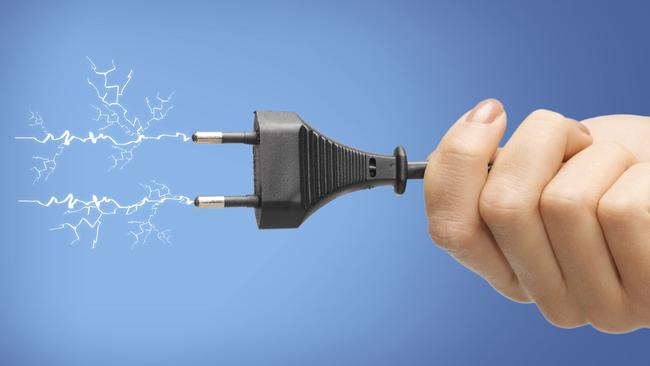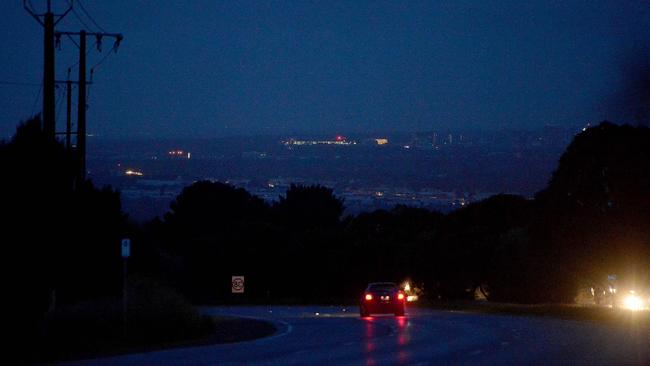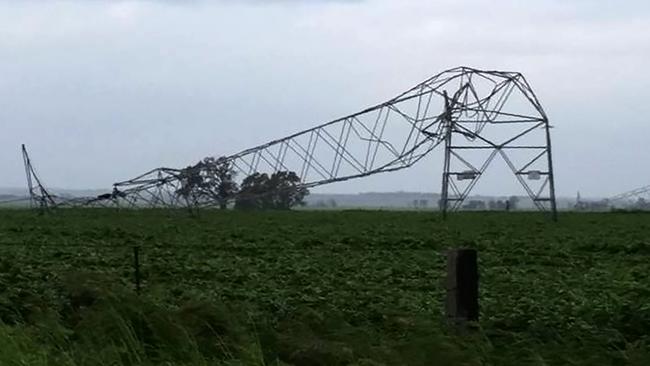SA blackouts: What’s wrong with South Australia’s energy market and infrastructure?
A SERIES of blackouts over the past few months has cast a spotlight on South Australia’s energy market and infrastructure. So what’s happening — and why?

SA News
Don't miss out on the headlines from SA News. Followed categories will be added to My News.
- Chinese plan to build gas-fired station in SA
- Key SA employers nearly shut down as power prices surged in storm
IT’S hard to know who or what to blame in South Australia when the lights go out or your soaring electricity bill lobs. A series of blackouts over the past few months has cast a spotlight on South Australia’s energy market and infrastructure, which we quickly learned is a complex mix.
What happened last week?
A freak storm lashed the state, dumping the second highest December rainfall ever on Adelaide, while 120km/h wind felled thousands of trees and more than 350 powerlines. Power was cut to more than 155,000 homes and businesses. About 10,000 were not reconnected for more than 48 hours, while 1000 stayed off the grid for four days or more.
Why did it take so long for the power to come back on?
The vast majority of outages were caused by damage to power lines owned by SA Power Networks. As the damage was so widespread, it required a massive amount of manpower to fix. The electrical workers union blamed cuts to maintenance staff jobs for the slow repairs and a consistent lack of spending on general maintenance for so many lines being affected. The State Government said forcing SAPN to pay higher compensation the longer the power was out in the future could help speed up the process.

How does last week’s blackout differ from the statewide blackout in September?
The root cause of both was a storm. However, the September 28 storm caused serious damage to key infrastructure, including generators and towers, instead of just street-level poles and wires. The national energy market operator is yet to release its final report into what caused the whole state to go black. But what we know from its preliminary reports is that nine wind farms shut down after a series of shocks during the storm on September 28. That created a sudden, huge demand on the state’s interconnector with Victoria, which tripped it. The frequency of the state grid (which has to remain within strict levels, otherwise it will blow up infrastructure) then plummeted and the state went black.
Is South Australia’s electricity system particularly fragile?
Poles and wires are damaged by high speed winds and fallen trees no matter what state they’re in. But the electrical workers’ union thinks SAPN is particularly behind on regular maintenance which could make them more susceptible to damage. The September blackout and July price spikes have highlighted more structural problems with the state’s energy supply. Unlike the eastern states, South Australia has no coal-fired power plant after the Northern Power Station closed last year, and wind makes up about a third of power generated here. While wind and solar has the capacity to meet demand, it cannot provide a stable base load because it only generates when the sun is shining and the wind blowing. This has meant the state has become particularly reliant on power imported from Victoria through the Heywood interconnector. Lots of political debates about energy centre on how to ensure the state has enough base-load power for energy security.
What is SA Power Networks?
It is the primary electricity distribution business for the state. It owns the poles and wires carrying low-voltage electricity from the high-voltage transmission network and connects it to homes and businesses across the state. It maintains about 720,000 Stobie poles and 200,000km of wires across the state. The State Government used to own the distribution network before it was controversially sold off in 1999 under the Olsen Liberal Government. The current primary shareholder is Hong Kong-based Cheung Kong Infrastructure Holdings Limited.
Is compensation available?
SAPN customers are entitled to Guaranteed Service Level payments following lengthy blackouts. Customers who are eligible do not need to submit a claim, they are supposed to automatically receive a cheque in the mail. Payments increase the longer the power is out, starting at $100 for blackouts lasting 12 to 15 hours and rising to $605 for those lasting more than 48 hours. Last week Energy Minister Tom Koutsantonis asked the regulator, the Essential Services Commission of SA, to review the payments and consider getting rid of the cap so that people affected for longer than 48 hours could get a higher payout. Customers can also make a compensation claim for damages or losses as a result of a blackout.
Did SAPN pay compensation after the September blackout?
Nowhere near as much as they’re set to this time around. That’s because SAPN couldn’t start restoring power in September until ElectraNet, which manages the state’s high-voltage transmission lines, had put temporary transmission towers in place to replace those flattened by devastating winds. But transmission towers weren’t damaged by the storm last week, meaning SAPN was solely responsible for getting the lights back on.

What’s the difference between a distributor and a retailer?
A retailerpurchases electricity services from SAPN, the distributor, and then charges for it. Retailers all offer different rates and plenty of special deals, so it pays to shop around for the best price. Some retailers — such as AGL, which owns the gas-fired Torrens Island Power Station — are also generators of power in South Australia.
What does the Essential Services Commission of SA do?
It is the independent economic regulator for many basic services. For electricity, ESCOSA’s role includes determining rooftop solar feed-in tariffs, licensing generators such as gas-fired power stations and wind farms, licensing companies that operate a system for transmission or distribution of electricity, and it makes industry codes and rules for the service delivery. As part of the energy distribution code, it sets the rules around payouts for power outages caused by damage or faults with the poles and wires.

What do all the other acronyms stand for?
AER: The Australian Energy Regulator is the economic regulation for the wholesale electricity market and electricity networks in the National Energy Market. It has responsibility for consumer protection and performance monitoring of retail energy markets and enforces energy laws and rules.
AEMC: The Australian Energy Market Commission is the body responsible for making the rules that govern the electricity and natural gas markets.
AEMO: The Australian Energy Market Operator is a body set up by the Federal Government to manage the national energy market that interconnects Queensland, NSW, the ACT, Victoria, SA, and Tasmania. It has the responsibility to ensure enough energy is being generated to satisfy demand and that the system is stable. When infrastructure faults have the potential to shut down the system, AEMO decides how the grid should respond to minimise the areas to have their power supply cut.


